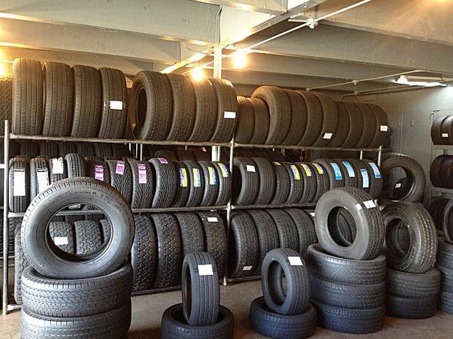The Scientific Research Behind Tire Repair Work and Safety And Security
When it concerns the detailed world of tire maintenance and safety, there exists a realm of scientific research that usually stays unseen by the average vehicle driver - tire tracks morris il. The materials that make up a tire, the effect of tire stress on total safety and security, the effects of walk wear, the intricate dynamics of tire traction, and the often-overlooked relevance of appropriate wheel alignment all play vital functions in making certain an automobile operates safely and efficiently. As we browse with the complexities of tire repair service and security, it comes to be apparent that a much deeper understanding of these scientific concepts is not only helpful however essential for every chauffeur when traveling
Tire Structure and Performance
What materials make up the composition of tires, and exactly how do these components add to their capability on the roadway? Steel cords are incorporated to improve the tire's toughness and assist it preserve its shape under various road problems.
The rubber substances supply grip and traction, allowing the tire to adhere to the road surface area and provide security throughout velocity, stopping, and cornering. Generally, the mindful selection and mix of these materials make certain that tires can execute successfully and securely on numerous roadway surfaces and conditions.
Effect of Tire Stress on Safety And Security
On the various other hand, overinflated tires have much less contact with the roadway surface, lowering traction and causing uneven wear on the tire treads. Effectively inflated tires likewise play an important function in gas performance, as underinflated tires can increase rolling resistance, leading to lowered gas mileage. Regularly examining and keeping the appropriate tire pressure not just makes sure safety and security but additionally prolongs the lifespan of the tires, conserving on substitute expenses in the long run.
Footstep Use and Its Implications
Correct surveillance of tire walk wear is vital for guaranteeing optimal performance and security when traveling. As tires put on down, the depth of the walk decreases, lowering the tire's capacity to keep traction, specifically in unsafe or damp conditions. The walk pattern and deepness play a crucial role in directing water far from the tire to avoid hydroplaning and preserving hold on the roadway surface.
Indicators of too much step wear consist of bald spots, uneven wear, and the appearance of wear indications. Hairless spots show local wear, which can result in instability and enhanced danger of blowouts. Unequal wear may recommend problems with tire suspension, alignment, or rising cost of living parts. Wear signs are constructed right into the tire step and come to be visible when the walk deepness reaches a particular reduced point, indicating the need for instant substitute.

Comprehending Tire Grip Dynamics
Monitoring tire step wear not just makes sure ideal performance and safety and security but additionally directly influences the grip characteristics of the tires on different road surfaces. Tire traction is an essential facet of automobile handling and security, as it establishes the grip in between the tires and the roadway. Grip characteristics differ depending upon roadway problems such as dry pavement, wet roads, snow, or ice.

Comprehending tire grip dynamics is necessary for chauffeurs to adapt their driving behavior according to the roadway conditions. tire tracks morris il. Frequently examining tire step deepness and problem can dramatically improve traction efficiency, ensuring much safer driving experiences across numerous surface areas
Value of Correct Wheel Alignment
Making certain appropriate wheel placement plays a critical role in maximizing automobile performance and from this source prolonging tire long life. Appropriate wheel positioning entails readjusting the angles of the wheels to manufacturer specs, making sure that they are perpendicular to the ground and parallel to each various other. When alignment is off, special info it can bring about unequal tire wear, lowered fuel efficiency, and jeopardized handling.
One of the vital benefits of maintaining correct wheel positioning is improved managing and stability. Misaligned wheels can cause the car to draw to one side, influencing steering control and overall driving experience. Additionally, proper alignment promotes even tire wear, avoiding premature tire replacement and conserving on upkeep expenses in the long run.

Final Thought
In conclusion, the scientific research behind tire repair service and security is crucial for keeping lorry performance and making sure motorist safety and security. By recognizing tire make-up, resource stress, step wear, grip dynamics, and wheel positioning, vehicle drivers can stop crashes and extend the lifespan of their tires.
The materials that compose a tire, the impact of tire pressure on general safety, the ramifications of tread wear, the elaborate characteristics of tire traction, and the often-overlooked significance of appropriate wheel positioning all play important functions in guaranteeing a vehicle runs safely and effectively. On the various other hand, overinflated tires have less call with the road surface area, reducing grip and causing unequal wear on the tire treads. Consistently inspecting and keeping the appropriate tire stress not just makes certain security yet likewise expands the lifespan of the tires, saving on substitute costs in the long run.
Keeping track of tire tread wear not only guarantees ideal performance and safety however additionally straight influences the traction dynamics of the tires on different road surfaces. Tire grip is a critical aspect of car handling and security, as it determines the grasp between the tires and the road.